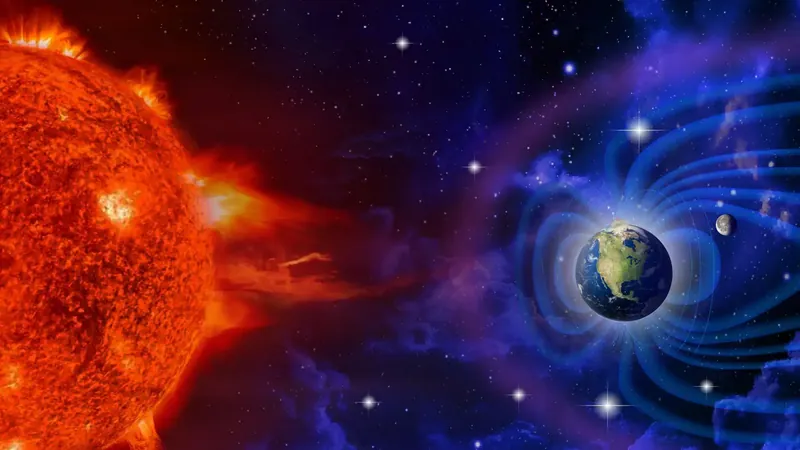
Major Breakthrough in Solar Flare Prediction Could Revolutionize Space Safety!
2025-01-21
Author: Wei
The Secret Behind Coronal Loops
A recent study published in the prestigious *Astrophysical Journal Letters* has explored the connection between coronal loops—plasma structures in the Sun's atmosphere—and solar flares. Led by Emily Mason from Predictive Sciences Inc., this study focused on analyzing the behavior of coronal loops preceding 50 significant solar flares. The team noted noteworthy fluctuations in brightness, particularly in extreme ultraviolet light emitted from these loops. Crucially, the loops above active solar regions exhibited a distinct flickering phenomenon compared to those found in quieter areas.
This flickering intensifies in the hours leading up to a solar flare, potentially enabling scientists to predict these stellar explosions with a lead time of 2 to 6 hours. Mason emphasized that this development could drastically enhance solar flare forecasting accuracy, boasting a success rate of 60 to 80 percent. Such advancements offer profound implications for understanding solar processes and improving preparedness for solar activity.
Revolutionizing Space Mission Safety
The implications of this research extend far beyond academic circles. Seth Garland from the Air Force Institute of Technology highlighted that traditional prediction methods often relied on broad averages. The newly proposed approach, however, offers precise timing predictions for solar flares, enabling timely alerts for both space missions and ground systems. Kara Kniezewski, a leading researcher, pointed out that the seemingly chaotic flickering patterns in loop emissions provided reliable predictive results.
Vadim Uritsky from NASA’s Goddard Space Flight Center explained the potential for integrating this new methodology into real-time systems. This could usher in early warning capabilities for everything from space missions to terrestrial infrastructures, although he cautioned that further observations are essential to refine the links between flickering and flare intensity.
The Future is Bright for Solar Flare Prediction
As scientists continue to enhance their methods, the future of solar flare prediction appears incredibly promising. The ability to predict these explosive solar events with greater accuracy could revolutionize our preparedness for space weather. Given our increasing dependence on technology, understanding and foreseeing solar activity is crucial for protecting critical systems on Earth and ensuring astronaut safety.
The integration of these findings into operational systems could lead to the creation of advanced warning systems that alert astronauts and satellite operators to impending solar flare activity. This proactive strategy would minimize disturbances to communication and navigation systems that are susceptible to solar disturbances, making it a critical advancement for safeguarding our technological infrastructure.
With this breakthrough on the horizon, the race is on to develop sophisticated prediction systems that could one day spare us from the chaotic impacts of solar activity. The future of space exploration and technology safety is indeed looking bright!



 Brasil (PT)
Brasil (PT)
 Canada (EN)
Canada (EN)
 Chile (ES)
Chile (ES)
 Česko (CS)
Česko (CS)
 대한민국 (KO)
대한민국 (KO)
 España (ES)
España (ES)
 France (FR)
France (FR)
 Hong Kong (EN)
Hong Kong (EN)
 Italia (IT)
Italia (IT)
 日本 (JA)
日本 (JA)
 Magyarország (HU)
Magyarország (HU)
 Norge (NO)
Norge (NO)
 Polska (PL)
Polska (PL)
 Schweiz (DE)
Schweiz (DE)
 Singapore (EN)
Singapore (EN)
 Sverige (SV)
Sverige (SV)
 Suomi (FI)
Suomi (FI)
 Türkiye (TR)
Türkiye (TR)
 الإمارات العربية المتحدة (AR)
الإمارات العربية المتحدة (AR)